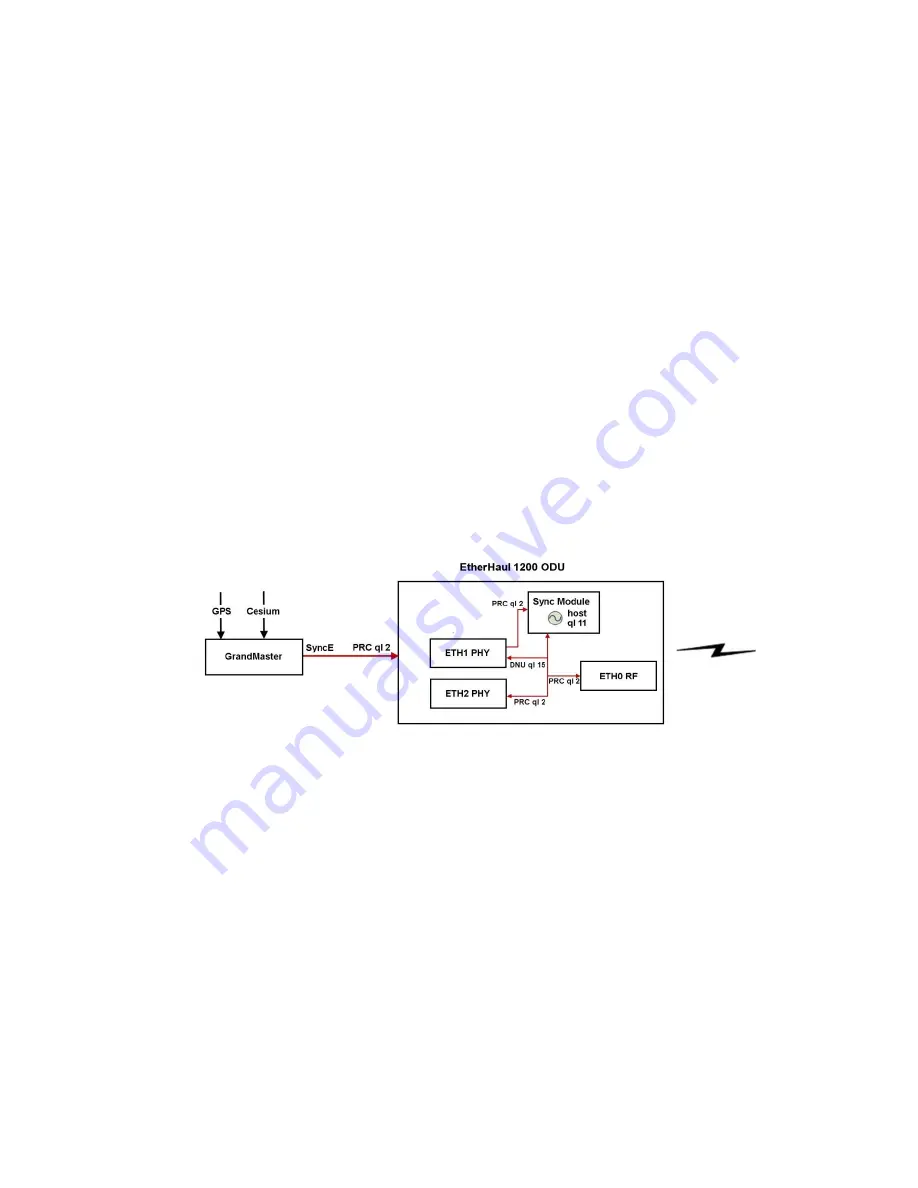
Installation and User Manual
EtherHaul
1200™
Page 106
EH-INST-02, Issue 4.0
7.4
Configuring Synchronous Ethernet (SyncE)
7.4.1
SyncE Overview
The EtherHaul 1200 provides Synchronous Ethernet (SyncE) capabilities, receiving a
synchronized Ethernet link and providing a synchronized Ethernet link on the other end
of the wireless link within the required masks.
SyncE is a link-by-link distribution scheme that uses the Ethernet physical layer to
accurately distribute clock frequency. ITU-T standard G.8261 defines various aspects of
SyncE, such as the acceptable limits of jitter and wander as well as the minimum
requirements for synchronization of network elements.
With SyncE, the receive clock is extracted from the Ethernet Rx by the clock unit and
used for transmission on all interfaces, propagating the clock in the path. Every SyncE
Network Element contains an internal clock called the Ethernet Equipment Clock (EEC).
The EEC locks on the Rx clock and distributes it for transmission on all interfaces,
attenuating jitter and wander, and maintaining clock-in holdover. If the Rx clock fails,
the local unit switches to holdover and regenerates the clock accurately until the failure
is corrected.
Figure
7-15 SyncE Functional Diagram
Synchronization messages are transported between the SyncE elements using Ethernet
Synchronization Message Channel (ESMC). ESMC is similar to SSM (Synchronization
Status Message), used in Sonnet/SDH systems. ESMC carries information about the
Quality Level (ql) and sync status of the source clock, enabling the EtherHaul 1200 to
determine which clock source of use-based on performance and the need to avoid
loops. Quality Level is based on the clock’s holdover performance.
















































